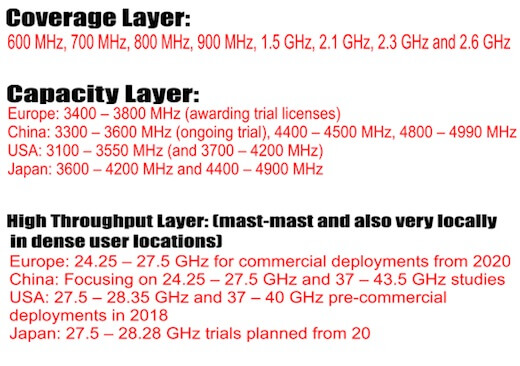Wireless internet service providers will be increasingly using 5g cell towers, some sort of novel kind of antenna. They may be created considerably more densely and have additional capabilities than 4-g towers.
There will be growing worry throughout many communities why these buildings may pose health risks to be able to locals. Health, personal space, and appearance are generally legitimate places of worry.
Learn more may Much Larger

Since the radio waves used by 5G are higher in frequency than those used by 4G, more transmission may be are required. What this particular means is that will more radiation may well be released to the atmosphere.
Communities using HOAs, company masters, real estate speculators, and folks worried concerning their health just about all have a lot to lose in the event that this continues. These people are worried how the increased number involving 5G towers would certainly have a detrimental impact on property prices and people's wellness.
To solve this specific problem, we need to alter our mode associated with communication and switch to utilizing internet rather than cell networks. This won't occur immediately, yet it will take place.
Okay, but precisely how exactly are we going to carry out that? About what techniques might we enhance safety? The answer is covered within a cell system by means of a piece of technology referred to as tiny cells.
To put it simply, they cost considerably more.
Those who have ever lived in a city have likely seen the massive cellular equipment towers that perch atop various masts and buildings. They can be 4G cell may be, and they serve the community by displaying wireless network alerts.
They range in height from fifty to 200 ft and are can be aesthetically unobtrusive because they are built in keeping with their surroundings. In order to be able to provide wide-area service, 5G technology requires a significantly denser tower coverage as compared to 4G did.
Heavy cell sites may be challenging to keep up due to the constant connectivity and high speeds they should offer. Hence, these podiums are more expensive than others associated with their kind.
It makes sense intended for tower owners and mobile network providers to organize for the particular arrival of recent systems by upgrading their existing masts to 5G. You might grow the site's functionality and attract extra customers by using these types of latest technologies.
They will Provide a Higher Risk
To exactly what extent are 5G Towers detrimental, plus why
More radio stations frequency (RF) light is emitted simply by 5g towers, which in turn is a major cause for worry. The reason for the reason being a greater occurrence of installation is definitely required to give complete coverage.
But , the RF dunes emitted by cell phone towers may breakdown chemical links throughout DNA, which can easily harm cells and even cause cancer, without ever harmful DNA directly or perhaps heating bodily damaged tissues.
Concerns have already been raised about the particular potential health hazards associated with living in close proximity in order to a 5g tower system.
That's because 5G towers are usually situated in close proximity to residential regions and educational corporations, making them constantly transmit RF signals. Within other words, will have them closer than ever before before, rendering it a lot more probable your human body will absorb typically the radiation they emit.
Simply Said, These kinds of are Not Required
To deliver data, 5G networks will use millimeter waves, a hitherto unused portion associated with the radio spectrum. safe distance from cell tower (only 1? 10mm) and higher frequency (they may carry more energy) make them superior to longer-wavelength radio dunes.
If what is a safe distance from a 5g cell tower will deliver on their promise of lightning-fast downloads and minimal lag in reply times, then an extensive infrastructure of cell towers will be essential. Covering cities, highways, commercial schisme, universities, and sometimes farmland calls with regard to a dense network of cell and gives.
Yet alternative strategies exist to deliver fast internet to densely populated places. Constructing a network regarding tightly spaced tiny cell stations is usually one approach to filling dead locations in mobile cell phone service.
Yet where these little cellular material will go and just how they will influence inhabitants is a huge worry. Occupants and municipal government authorities alike are seeking for possible countermeasures to these installs.
